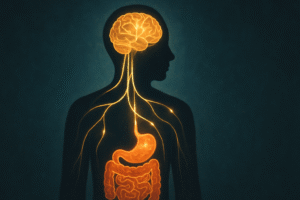Fun fact: Your arteries can start clogging silently in your 20s—long before any symptoms of heart disease appear!
Not long ago, my father’s friend underwent open-heart surgery. The reason? A serious condition known as three-vessel coronary artery disease, where all three major arteries supplying blood to the heart had been blocked, thanks to an invisible enemy: plaque.
His story isn’t just a medical case—it’s a powerful reminder of how heart disease creeps in silently and strikes hard.
Plaque: The Hidden Villain Inside Your Arteries
Plaque isn’t some gory horror-movie slime. It’s made of cholesterol, fat, calcium, and other substances that slowly stick to the walls of your arteries over time. Think of it as a slow-growing, sticky mould inside a water pipe—only this pipe supplies blood to your heart.
When this buildup becomes thick, it narrows the blood flow—a condition called atherosclerosis.
Over time, this reduced blood flow can lead to chest pain (angina), shortness of breath, and worse—heart attacks. And the most chilling part? It can progress without a single symptom until it’s too late.
What Is Three-Vessel Disease?
Three-vessel disease is a severe form of coronary artery disease (CAD) where all three major coronary arteries are blocked or significantly narrowed:
- Left Anterior Descending (LAD) artery
- Right Coronary Artery (RCA)
- Left Circumflex (LCX) artery
When plaque blocks these arteries, the heart muscle is starved of oxygen. For my father’s friend, this meant symptoms like fatigue, shortness of breath, and perhaps even tightness in the chest—all pointing toward a dangerously restricted blood supply.

The Surgery That Saved His Life
The answer? Coronary Artery Bypass Grafting (CABG)—a major open-heart surgery that involves redirecting blood flow around the blocked arteries using healthy blood vessels (usually taken from the chest or legs).
During CABG:
- The chest is opened.
- The heart is temporarily stopped.
- A machine takes over blood circulation.
- New pathways (bypasses) are created for blood to flow to the heart muscle.
This is considered the gold standard for treating three-vessel disease, especially in patients with diabetes or reduced heart function.
According to the American Heart Association, CABG significantly improves survival rates, especially in people with multiple blocked arteries.
Reclaiming Life: What Happens After Surgery?
Surgery is only the beginning. Healing the heart is as much about daily habits as it is about medical intervention.
Cardiac Rehabilitation becomes crucial:
- Supervised exercise programs to rebuild heart strength
- Nutritional counselling to prevent further plaque formation
- Support groups or therapy to manage fear, stress, or depression
Most patients can return to a near-normal life within 8–12 weeks, especially with regular follow-ups, medications, and lifestyle changes.
Can Plaque Be Reversed?
That’s the golden question.
While plaque reversal is still debated, plaque stabilisation and regression are real possibilities. Here’s what’s working:
- High-dose statins: Lower LDL (“bad”) cholesterol, stabilise plaque, and reduce inflammation.
- PCSK9 inhibitors: New injectable drugs that dramatically cut cholesterol levels.
- Lifestyle medicine: Programs like Dr. Dean Ornish’s have shown partial plaque reversal through plant-based diets, stress management, and exercise.
- Futuristic tech: Clinical trials are testing nanoparticles, gene editing (CRISPR), and AI-powered early detection tools.
Bottom line: You can’t erase all plaque, but you can make it less dangerous.
Why Early Detection Matters More Than Ever
Heart disease is still the leading cause of death worldwide. And yet, it’s tragically underdiagnosed, especially in people who ignore “small” symptoms.
Watch out for:
- Unexplained fatigue
- Shortness of breath during simple tasks
- Pain in the jaw, back, or arms
- Indigestion or nausea after mild exertion
A simple stress test, ECG, or coronary calcium scan could be the warning signal that saves a life.
A Voice That Should Be Heard
When my father’s friend said, “Plaque is a powerful foe,” it wasn’t just a reflection—it was a warning to all of us.
He didn’t smoke. He ate decently. But life gets busy, checkups get delayed, and sometimes genetics sneak in where we least expect. His story reminds us that even strong, active people can become silent carriers of heart disease.
The Way Forward
Let’s be honest—plaque is sneaky. But it’s not unstoppable.
Medical science is moving faster than ever. We now know that small daily choices—like what you eat, how often you move, and when you get screened—can make the difference between a blocked artery and a full, vibrant life.
So if you haven’t had a heart checkup in a while, let this story be your sign. Because sometimes the loudest warnings come not in pain, but in silence.
Author’s Note
This article was inspired by my father’s friend, a heart disease survivor whose courage in the face of surgery and recovery is a lesson in awareness and action. If you or someone you know has been affected by coronary artery disease, share this story. Let it start a conversation—and maybe even save a life.
G.C., Ecosociosphere contributor.




